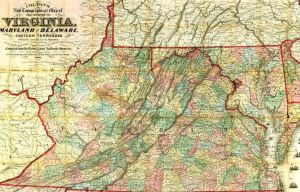 Defeated and humiliated at the Battle of Fredericksburg last month, Union General Ambrose Burnside now seeks revenge. Today he begins a military march that becomes known as the “Mud March.”
Defeated and humiliated at the Battle of Fredericksburg last month, Union General Ambrose Burnside now seeks revenge. Today he begins a military march that becomes known as the “Mud March.”
In Jan. 1863, after the Federal defeat at the First Battle of Fredericksburg on 13 Dec., Maj. Gen. Ambrose E. Burnside sought to restore the army’s morale by crossing the Rappahannock River at Banks’s Ford two miles south and attacking the rear of Gen. Robert E. Lee’s army. The march began on 19 Jan.; that night a warm front thawed the frozen road with 48 hours of pouring rain. Confederates across the river taunted the sodden Federals with large signs: “This Way to Richmond” and “Burnside Stuck in the Mud.” Burnside canceled the march on 23 Jan., and two days later President Abraham Lincoln replaced him with Maj. Gen. Joseph Hooker.
During the Mud March, yet another Baptist church becomes a casualty of war. Berea Baptist Church, established in 1852, is used by Union troops as a stable. The soldiers tear out the gallery and pews, and break the windows. Not until after the Civil War is the damaged church repaired.
Sources: “The Mud March” (link); Berea Baptist Church, De’Onne C. Scott, Images of America Stafford County, p. 18 (link)


